An influential if at times flawed travelogue from the late 1970s.
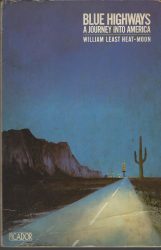 When I was about ten I went to see ‘Born Free’ with a friend. This involved walking from Thornhill down to Low Mill along the river Ehen by the beck fields and past the shoe factory into Egremont. Given it was the first time I had ever done it on my own it seemed like a lengthy expedition. Many years later I persuaded my daughter to take the same walk – which is lovely. It took about 15 minutes.
When I was about ten I went to see ‘Born Free’ with a friend. This involved walking from Thornhill down to Low Mill along the river Ehen by the beck fields and past the shoe factory into Egremont. Given it was the first time I had ever done it on my own it seemed like a lengthy expedition. Many years later I persuaded my daughter to take the same walk – which is lovely. It took about 15 minutes.
And that’s the nature of travel – what was once an expedition is now a relatively safe afternoon stroll – as evidenced by the ridiculous queues to get up Everest (though plenty still die up there) and what I imagine are (or were?) streams of gap year backpackers falling over each other to get into a once remote location. Now, it’s not where shall I go, more, how shall I do it – with a fridge on my back or shall I just see how fast I can complete? By bike, the current record is 78 days 14 hours and 40 minutes (there is a rumour that it was actually 39 minutes) to get around the world. Now, it’s impressive, but what’s to savour in that? You might just as well do it on a set of rollers.
The point of this rather digressive introduction is to ponder the nature of travel – which after all is what, ‘Blue Highways‘, is all about. Huck Finn’s desire to, ‘Light out for the territory’, has become something of a cliche and of course, America being the size it is, allied to the myth of the west and westward expansion, inspired and inspires such ventures. Least Heat Moon indicates that Steinbeck’s ‘Travels with Charley’ was a seminal account – he also reckons that there are now over 2000 such travel books to consider.
In contrary fashion, I am actually a great fan of such accounts, though many are very poorly written. I am more engaged by Ted Simon’s 4-year journey on a Triumph Tiger than I am by Mark Beaumont’s 78-day spin. If you really want to marvel at traveling fortitude read Rory Stewart’s beautifully written, ‘The Places in Between,’ and try not to be distracted by the fact that he is or was a Tory of privileged birth. In all of this reading what I learned is that travelers –
– Rely on the kindness of people who often have very little
– Need the right personality – so if you are a punctilious, control focussed Virgo like me then don’t bother.

William Least Heat-Moon (once known as William Trogdon) of Osage, Irish and English ancestry, is considered to be a classic travel writer, no less than Robert Penn Warren (the only man to win a Pulitzer for poetry and fiction apparently) wrote thus,
‘The book is called Blue Highways, and it is a masterpiece…Least Heat-Moon has a genius for finding people who have not even found themselves, exploring their lives, capturing their language, and recreating little (or big) lost worlds, or moments. In short, he makes America seem new, in a very special way, and its people new. Blue Highways is a magnificent and unique tour’.
The book was very popular, making the new York Times bestseller list in 1982–83 for 42weeks.
At the age of 38 Least Heat-Moon, an academic, lost his job teaching English and was losing his wife (whom he seems to refer to rather disparagingly as, ‘The Cherokee’). He decided to travel around America in a converted van he dubs, ‘Ghost Spirit‘. His idea is to stick to what he refers to as the Blue Highways, so-called because that is how they are coloured in an old-style road atlas, avoiding as many major roads as possible. This is a decision that is easy to understand when he describes those occasions when he does stray from the backroads. It is intended to be a trip to the byways of rural America – to the smallest of small towns. If you look at the map of his journey he seems to be averse to California as well – the reason being unexplained.
Rather predictably he packs a copy of, ‘Leaves of Grass’, and, ‘Black Elk Speaks’, (I’m sure, ‘On the Road,’ gets a mention somewhere). The former I know something about and sometimes wonder if it is a fashion statement or whether it does get read cover to cover. To be fair Least Heat-Moon does quote from it on a regular basis, so perhaps he reads it as well. The Black Elk book is something about which I know nothing.
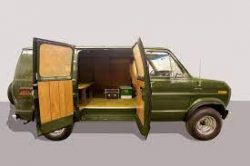
During his 13000 mile, 3 month trip Least Heat-Moon must have averaged about 150 miles a day so bearing in mind the nature of the roads and the likely occasional need to avoid any refugees from a Stephen King backwoods horror novel, it is clear he didn’t hang around a great deal – mostly it was staying the night then moving on. There are times when the terrain and weather suggest that moving on is the wise thing to do. He searches deliberately for places with odd names such as Dime Box, Difficult, Dull, Defeated, Energy, Enterprise, and Intercourse. There’s plenty more where they came from and Least Heat-Moon makes a point of seeking out the derivation and source – thus regularly coming into contact with local elders who lament times gone by and bewail the present – which does rather set a tone. Least Heat-Moon does not approach the journey in the most positive frame of mind and admits to being lonely at times and thus some of these encounters have the feeling of curmudgeon meeting curmudgeon. There are a number of photographs in the book – rather poor, grainy, and underexposed, although in their way quite atmospheric. There are few that readily come to mind as featuring a truly smiling face – perhaps Tom West a Cape Porpoise fisherman and brother Patrick Duffy. Actually, maybe those grim faces had a point?
In the first months of 1978, the great blizzard struck the Ohio Valley and the Great Lakes causing 51 deaths. Richard Chase, the Vampire of Sacramento was arrested, Roman Polanski fled to France to avoid prison on child sex charges. The North Eastern United States blizzard killed 100; Ted Bundy was arrested; the Hillside Strangler in Los Angeles claimed his 10th and final victim. Karl Wallenda fell to his death from a tight rope – all of that only in the first three months. Later in the year, 909 people committed suicide in Jonestown Guyana and John Wayne Gacy was arrested.
On the positive side, the film Grease was released and President Carter signed a bill legalising the home brewing of beer.
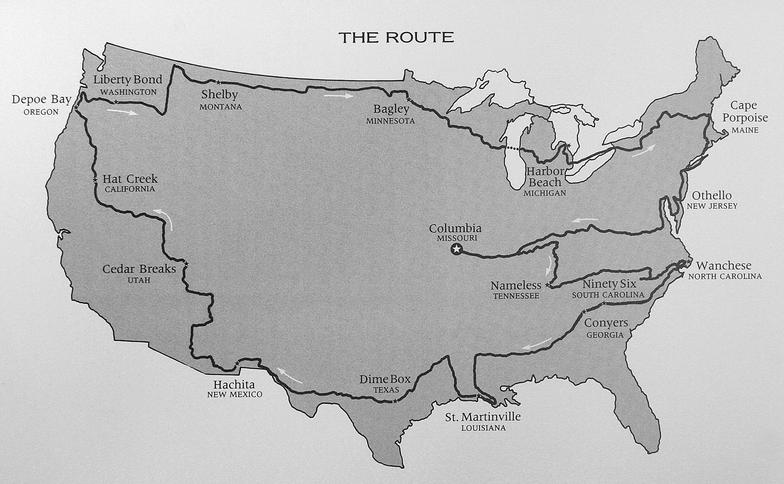
Least Heat-Moon meets a variety of characters including a Seventh-Day Adventist, an evangelist hitch-hiker (a testing character but one he ultimately warms to), a teenage runaway, a boat builder, a monk, an Appalachian log cabin restorer, a rural Nevada prostitute, a Hopi Native American medical student, owners of saloons bars and remote country stores, a maple syrup farmer, a number of Chesapeake island dwellers, and various fishermen. Probably just about par for the course on any such adventure?
Early in his trip, he visits Selma Alabama to see what might have changed since that famous confrontation on the Edmund Pettus bridge. In terms of change, an acid and disgruntled white man tells him, far too much, and two initially cagey black men say, far too little. Least Heat-Moon is warned that as a strange white man in town driving through the black area he will be tagged as a drug dealer. This is one of several occasions when he feels that the most threat he faces during his journey is from the local forces of law and order. He meets a black woman Barbara Pierre in St. Martinville and is clearly struck by her intelligence and energy – but you can’t help but feel that one way or another it will be knocked out of her in time.
In my view, Least Heat-Moon is not the most avuncular or engaging interlocutor you could imagine and there are occasions when the conversations he reports are, if not sharp, then certainly brusque – something that, as he reports it, could be attributed to both sides. Whilst he is shown a good measure of hospitality, ( ‘I wondered why it’s always those who live on little who are the ones to ask you to dinner’), his hosts are not always, initially, sweetness and light. Frustrated, disillusioned, and living on the margins as some are, it is perhaps no surprise. Given the oft-stated view that the world is not the place it used to be it seems unremarkable to detect an initial note of bitterness as working harbours on the east coast become playgrounds and marina’s, or as land disappears to such as the Atlantic City Electric Company (ACE) and their surreptitious and dubious purchasing tactics. Add to this, Least Heat Moon’s own observation that he could be ‘glum and sour and critical of everything’, and it can be interesting but less than joyous reading at times.
Least Heat-Moon, seemingly of perfectly acceptable looks himself, but clearly no Adonis, has a habit of describing people by way of their worst physical features and it doesn’t sit well.
‘I told the attendant -a surly fellow who could have raised mushrooms in the organic decay of his front teeth – about looking for Moonax. Two obese women with faces they might have bought at K-Mart burst out laughing from their Aluminum (sic) chairs’.
‘Her face pallid like a partly boiled potato’.
‘Where jacktars had walked with the sway the sea teaches, now coeds from the seven sisters waggled their precious butts atop Papagallos (the shoe of choice I believe), and permanent-press matrons, safe in tummy-control Spandex, their triceps swinging in the wind, lugged purses the size of seabags’.
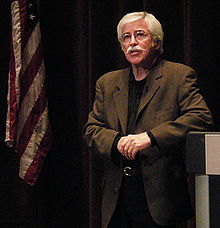
40 years on I believe Least Heat Moon is still alive, so he will almost certainly have discovered that everyone’s triceps swing in the wind eventually. I do wonder what his problem is? Irritation at the end of his own marriage, too long on the road, classic 1980’s male chauvinism. Whatever it is it is not the only instance where he spends time considering and denigrating the looks of others.
His encounter with a lone female horse rider who offers help thinking he is lost, doesn’t sit particularly well either. He can’t tell us enough just how good-looking she is, and without much ado, he asks her if she is going to invite him ‘home to the ranch’. He may well expect the answer to be no and the implication is that she is in confident control and likes the attention, feeling well able to say no. However with reference to some of the events of 1978 listed above – would you want a stranger coming on to your wife or daughter so brazenly? Different times I suppose and being fair the author does confess that he feels he may have lost his grip at that stage.
I do though, like the way he can skewer behaviour as opposed to his sour chauvinistic judgment of looks,
‘When I hear teamster cant about being the self-professed “son of a bitches of the Highway” when I hear stories of retreads shredding at seventy, when I watch drivers trying to recuperate on coffee and chili and look at faces with eyes bloodshot from “pocket-rockets” and witness their ludicrous attempts to be folk heroes I get very nervous the next time I see one pushing forty tons seventy miles an hour at me’.
There is without doubt plenty to enjoy in the book and there are lots of stories well and interestingly told. Kendrick Fritz has Hopi Indian roots (as he is described in the book – first nation having yet to become the description du jour) and the two discuss at length the history of his and other first nation inhabitants,
Congress didn’t even admit Indians to citizenship until about nineteen twenty. Incredible – live someplace for a thousand years and then find out you’re a foreigner.
Fritz talks about wanting to become a doctor and how this might appear to his people- most disturbingly of all, in his conflicted and contradictory view of himself, he admits to having a liking for Jethro Tull and The Moody Blues. To his credit, Least Heat Moon doesn’t flinch.
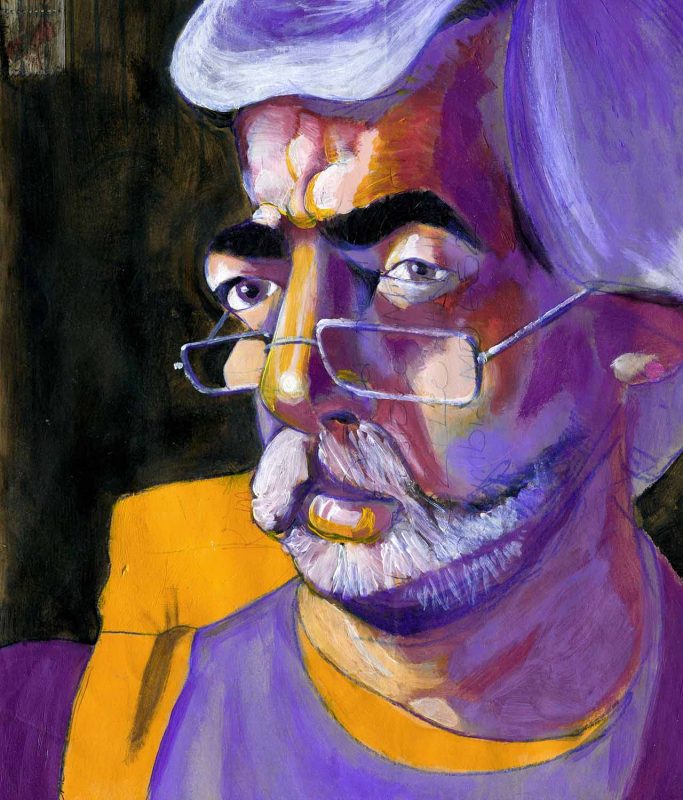
Given such conversations, you have to wonder whether Least Heat Moon has a gift for drawing people out or whether most are looking for a listener and might tell their story to the dog if it would sit still long enough. Sometimes all that is needed is to be a willing and patient listener – though that is an increasingly rare quality. A good example is the overheard conversation on page 191 about the price of sex – old men with white beards shooting the shit trying to tell the tallest tale.
It was explained to me by an Irishman that people go to Ireland expecting to find it as it was 40 years ago (make that 50 now). The implication being that they feel somehow cheated when it’s not. The fun of going across the sea by boat to Skye has now been replaced with a bridge – but I doubt the locals are complaining other than perhaps with regard to the influx of tourists it has generated. So it is with Least Heat Moon who finds a world either forgotten by time or much changed by progress. Whatever he may hope to find, to some extent ‘it is what it is’ and the residents and not him are obliged to make the best of it. Excepting this caveat the book is a good read and if it engenders a degree of scepticism and critical thinking on the part of the reader that is not a bad thing. It is reflective of the author’s own particular state of mind at the time – which I suppose, thinking about it, is why he made the journey in the first place.
If you like this book, and ultimately there is no reason why you shouldn’t, then Least Heat Moon has produced others including, ‘River Horse’, wherein he crosses the continent by boat and, ‘Prairyerth‘, wherein he produces a ‘deep map’ of a small location, namely Chase County Kansas.
There is an interesting lecture here that you may wish to dip into as the author discusses his book and as always there are a lively range of views here on the Goodreads website.



Having read ‘Blue Highways’ at the end of the 70s and really enjoying it,I found that Mr.Sharpe’s review nails the essence of it; although I am one of those people who re reads books which ‘stick’ with me, I have never re read ‘Blue Highways’.!
Thanks to Mr. Sharpe’s piece , I was able to bring it to mind readily and recalled what it was about the book that appealed; a very enjoyable article!
Perhaps ‘Zen and the art of motorcycle maintenance’ is worthy of a review?
Excellent suggestion James and I do have a copy of Zen….. watch this space